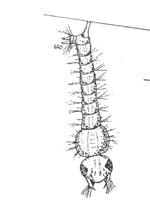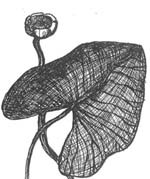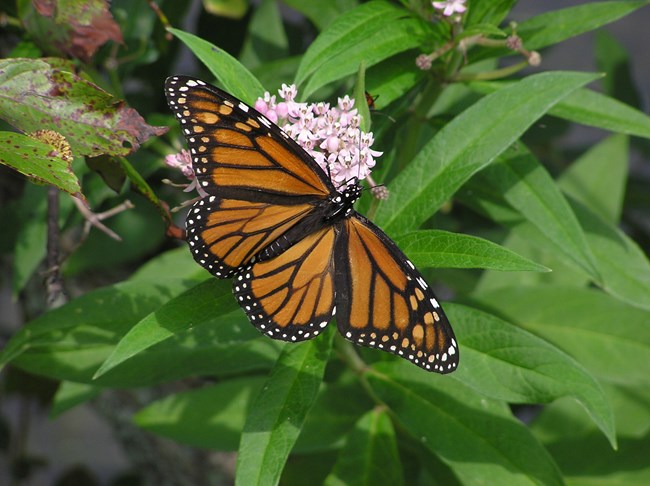
It's a bug eat bug eat plant world here. Mosquitoes in the park get eaten by pond beetles, and dragon and damsel fly larvae, and also by frogs and birds. In addition, the ponds have bladder weed, a carnivorous plant. The ponds maintain water for predators, like dragon flies, to mature. The marsh is tidal with moving water where mosquitoes can't survive. Our hours of 8:00 a.m. to 4:00 p.m. put visitors in the park between the dawn and dusk feeding times of mosquitos. The small bits of water that collect in street litter, however, are ideal for mosquito females to lay eggs safe from longer developing predators. This is why you are more likely to get bit by a mosquito in your neighborhood than at the park.

park volunteer Each summer a native insect larvae of the Galerucidaea family tunnel through the leaf tissue of the native nuphar in the marsh and ponds. After a few weeks, the larvae leave and the nuphar puts out new growth. If you are here when the nuphar is brown, be assured the plants are not dead, and are just playing their part in a relationship that is older than the park, or maybe people.

Ian Lothian Monarch butterflies are a yearly treat at the gardens. In some years the caterpillars, having eaten their fill of swamp milkweed, go into crysalis stage here, then emerge in the late summer and fall to begin the migration begun by their grandparents generation. Click for a life cycle video. |
Last updated: August 16, 2024
